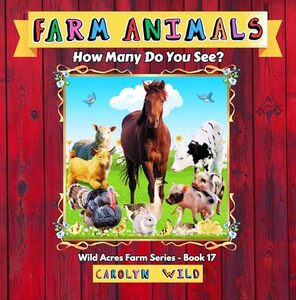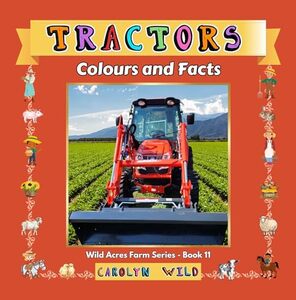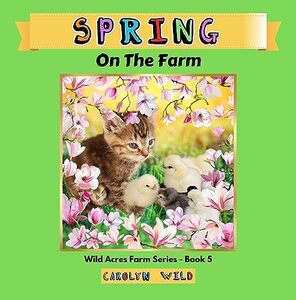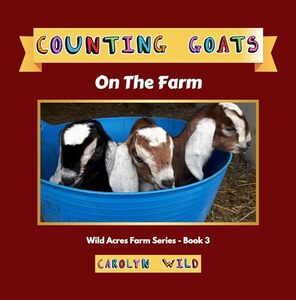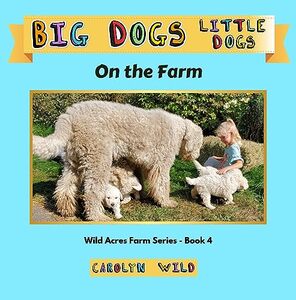Carolyn Wild Interview Published on: 05, Jun 2024
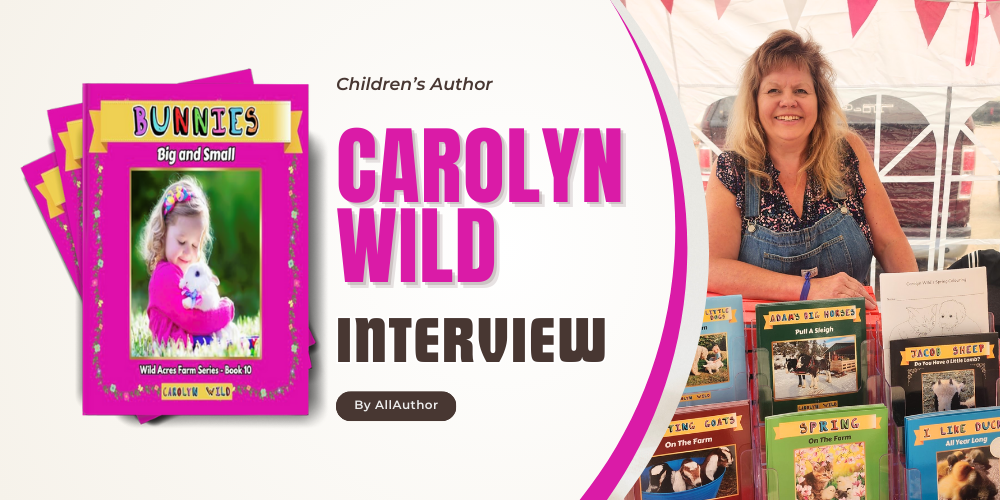 What inspired you to pursue a career in education, particularly focusing on teaching children to read?
What inspired you to pursue a career in education, particularly focusing on teaching children to read?
Years ago, a neighbor noticed my knack for working with children while I was caring for her grandchildren. This observation led me to pursue a career in Early Childhood Education. After some time, I decided to further my education by obtaining a teaching degree, with a primary focus on elementary education. Throughout my journey, I've come to realize that the foundation of learning in the primary years revolves around literacy. Without a strong grasp of letters, sounds, and words, it becomes challenging to effectively teach other subjects.
Can you share some key milestones or experiences from your 25-year journey as an educator that significantly shaped your approach to teaching reading?During my time at Leroux Froebel Bilingual School in Toronto as an Early Childhood Educator, I learned how to conduct small group sessions aimed at teaching children aged 4 and above letter names, sounds, and numbers. We even had special emergent books for them to practice reading at home!
At La Loche Community School in Saskatchewan, our principal recommended an Animated Literacy workshop, which I attended. The entire teaching staff embraced using stories, songs, drawings, and lessons to enhance phonemic awareness and promote a balanced literacy approach. As a grade 1 teacher, I prioritized small group instruction, particularly for literacy. Eventually, I became the primary leader in our school. This dedication to literacy contributed to our school winning the International Reading Association Award in 2004.
In La Loche, my son's kindergarten teacher was passionate about literacy and even created take-home readers for her students. I was inspired by her dedication. From then on, in every elementary school where I taught, I prioritized small group lessons, with a focus on reading, writing, and fine motor skills. Take-home books became a cornerstone of my teaching approach.
What’s your favorite spot to visit in your own country? And what makes it so special to you?"I've visited many places in Canada, but the Okanagan Valley in British Columbia is my favorite. Its shorter winters, stunning mountains, and lush orchards always drew me in. Living here since 2012 has been a dream come true. Our farm, Wild Acres, is surrounded by breathtaking scenery: a majestic mountain behind us, a picturesque valley in front, and a vibrant food forest filled with berries, flowers, and fruit trees. Whenever I want to unwind, I take my camera for a stroll, walk with my animals, and soak in the beauty around me.
What motivated you to create the Wild Acres Farm Series, and how do you believe it fills a gap or addresses a need in early childhood literacy education?After Covid hit and my son moved out, I felt a strong urge to be creative again. Seeing my son pursue his passion for art motivated me to develop my skills once more. My students have become avid readers of my books, enjoying them during class and even at home with their families. The books have been particularly helpful for English Language Learners and special needs children in my classroom, as well as for all the other students. They're also popular in reading groups throughout our school and in our community. I've intentionally included high-frequency sight words from spelling tests and early learning in my Wild Acres Series. Reading these books to each other has helped my students become more confident and independent readers.
Could you walk us through your process of developing emergent readers, including how you integrate various literacy elements such as sight words, rhyming text, and picture clues?Each emergent reader I create is a unique journey. Sometimes, it's inspired by life experiences, like visiting the Interior Provincial Exhibition in Armstrong or the O’Keefe Ranch. Other times, it stems from a child's drawing or a conversation with a student or colleague. Occasionally, it's sparked by words that students struggle with. And sometimes, the story simply flows out of me as I wake up. Throughout the process, I integrate various literacy elements such as sight words, rhyming text, and picture clues to ensure engaging and accessible reading experiences for young learners.
How do you ensure that your emergent readers not only engage children but also effectively support their literacy development?I level all my books using Lexile and Accelerated Reader to ensure they are at the appropriate reading level. I use a basic open-letter font, as suggested by colleagues and based on my own experiences. Additionally, I incorporate the first 100 high-frequency sight words, commonly used in spelling tests and other school-based take-home readers. My primary students particularly enjoy full-color photos, stories about animals, humor, and family themes.
Can you discuss the role of imagination in early childhood literacy and how it's incorporated into the Wild Acres Farm Series?My students tell me about their thoughts and dreams daily and they ask me to add certain concepts into my stories. We journal in the morning together and they tell me in their words what they want to see. They have a keen interest in science and the world around them and they love to color everything in a rainbow of colours.
What strategies or techniques have you found most successful in fostering a love for reading in young children?Read a variety of books spanning different genres every day with children, ensuring it's an enjoyable experience. Engage them in discussions about authors and books, valuing their thoughts on story details. Dedicate time to listening to them read, and shower them with praise and encouragement, filling their buckets with confidence and joy.
How do you balance the educational content and entertainment value in your books to keep children both engaged and learning?I often ask questions like, "What's your favorite book, and why do you love it?" or "Which animal do you like the most?" I also encourage them to read the words from the picture dictionary and eagerly say yes when they ask to read to me.
As an author and educator, how do you stay updated on the latest trends and research in literacy education, and how does this inform your work?As an educator, collaboration is key. I work closely with fellow teachers and resource personnel, attending professional development sessions and meetings to address literacy and other curriculum needs. Throughout the year, we assess each child's literacy knowledge extensively, providing regular updates to the school district and holding meetings with administrators and parents to discuss learning needs. Additionally, I actively participate in several Facebook groups dedicated to primary education, where I engage with parents, educators, and authors. My thirst for knowledge drives me to stay informed about new research and developments in the field.
What advice would you give to parents or caregivers who want to support their children's literacy development at home?Transforming reading and literacy lessons into enjoyable experiences is key. Encourage your child and offer assistance when they encounter challenges. Celebrate their progress with stickers, praise, or other rewards. Take trips to the library and create a home library that everyone can enjoy. Read together as a family, taking turns reading aloud and listening to each other. Demonstrate the importance of books by integrating them into daily life. Tailor your book selection to your child's interests and make sure those books are readily available. Make reading a cherished daily family activity that brings everyone together.
How do you see technology influencing the landscape of early childhood literacy, and how do you navigate incorporating digital elements into your educational materials?In both our world and my classroom, technology plays a significant role. That's why I offer my books on Amazon in Kindle format. My classroom is equipped with a SMART Board, and our school provides class sets of iPads and laptops for interactive lessons. Each child has a Raz-Kids reading account, and we also utilize Epic books. Teachers integrate these tablets into lessons across subjects like literacy, math, science, and social studies, as well as for research projects. Students engage with online stories and literacy videos, create digital art, write stories, and even sing songs using digital tools daily.
What future projects or developments can readers expect from you and the Wild Acres Farm Series?I currently have several books in production, each at various stages of completion. Finding the time to finish them or acquiring the right pictures and words is the main challenge. These books cover a range of topics, including animals, plants, rhyme, prepositions, the alphabet, family, and community.
How do you envision the role of multiculturalism and diversity in children's literature, and how does this influence your approach to creating inclusive reading materials?Multiculturalism is deeply ingrained in the philosophy of my school and district. In my classroom, I welcome children from diverse backgrounds and families, reflecting the rich tapestry of our society. Beginning my career as an educator in the multicultural city of Toronto, I've had the pleasure of teaching children across Canada in various cities and towns. To ensure inclusivity, I incorporate images of people from different backgrounds into my books and actively listen to the needs of my second language learners, their parents, and other resource personnel.
When did you join AllAuthor? What has your experience been like?I joined AllAuthor based on recommendations from fellow authors I met online, and I'm glad I did. It's been a valuable platform for me to connect with other authors, gain insights into the book industry, and promote my Wild Acres Farm Series. Thanks to AllAuthor, I've been able to raise awareness about my books and reach a wider audience.
Share Carolyn Wild's interview
Carolyn Wild is an experienced educator with a 25-year history of teaching children to read. Her mission is to develop a collection of emergent readers that not only spark imagination but also nurture literacy. Crafted by Carolyn, the Wild Acres Farm Series is a collection of leveled, emergent readers. Residing on Wild Acres farm with her husband Geoff, Carolyn calls the stunning Okanagan Valley in British Columbia, Canada, home.
 5 Crabby Apples: Ordinal Numbers and Subtraction (Wild Acres Farm Series Book 14)
Genre: Children's, Poetry
5 Crabby Apples: Ordinal Numbers and Subtraction (Wild Acres Farm Series Book 14)
Genre: Children's, Poetry

